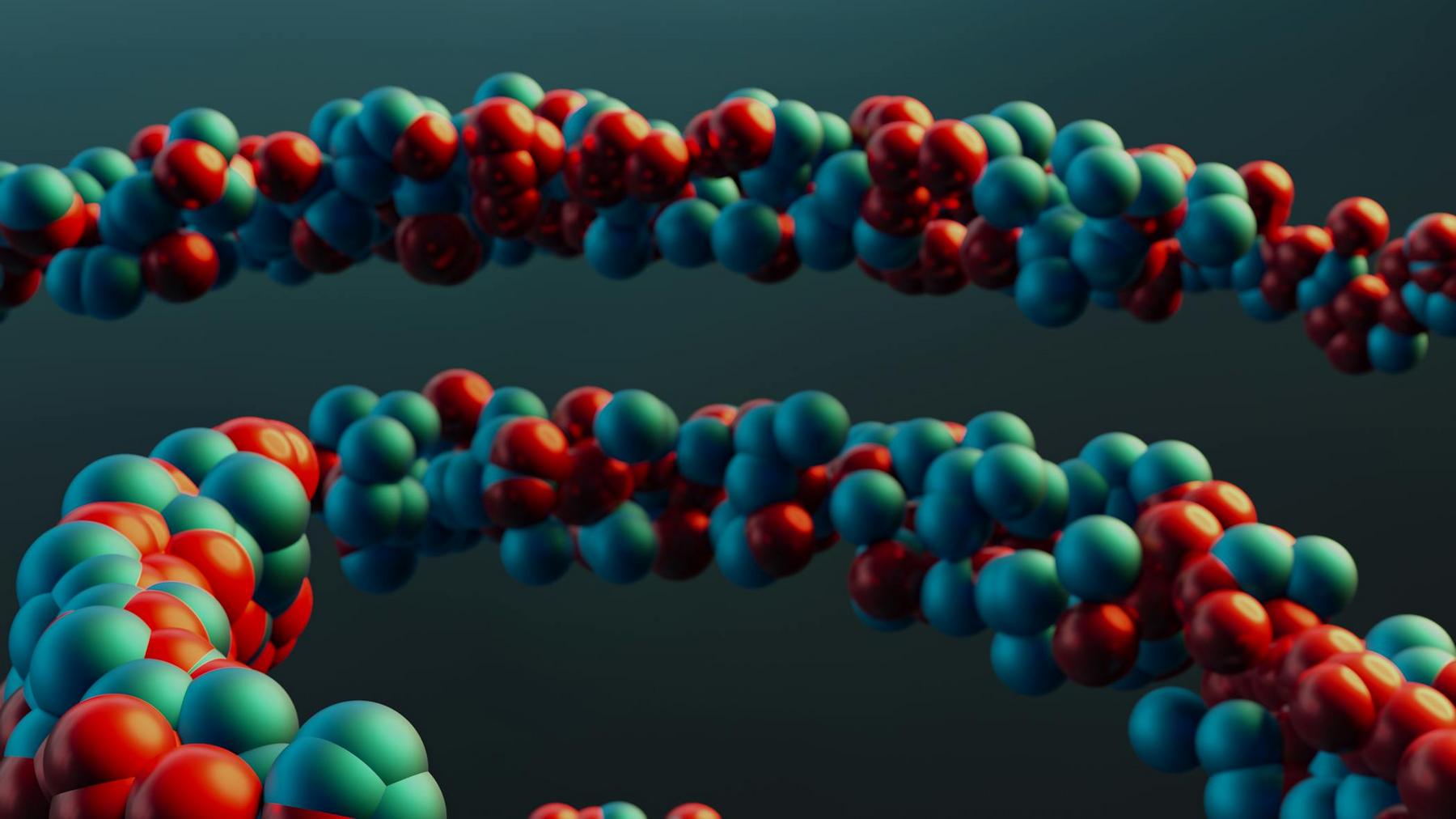Every second, within the trillions of cells comprising your body, an invisible biochemical battle unfolds. Highly reactive molecules—free radicals—assault the very structures that keep your cells functioning, whilst sophisticated defence systems work tirelessly to neutralise these threats. This delicate equilibrium between oxidative damage and antioxidant protection defines one of biology’s most fundamental processes: oxidative stress. When this balance shifts, the consequences ripple through tissues, organs, and physiological systems, potentially influencing everything from cellular ageing to the development of chronic conditions. Yet, despite its profound importance to human health, oxidative stress remains poorly understood outside scientific circles. Understanding the cellular-level effects of this phenomenon provides crucial insights into why our bodies age, how diseases develop, and what mechanisms govern cellular resilience.
What Is Oxidative Stress at the Cellular Level?
Oxidative stress represents a fundamental cellular imbalance occurring when the production of reactive oxygen species (ROS) and reactive nitrogen species (RNS) exceeds the body’s capacity to neutralise and eliminate them through antioxidant defence mechanisms. At its core, this phenomenon reflects a disruption in cellular redox homeostasis—the delicate equilibrium between oxidising and reducing forces within biological systems.
Free radicals are unstable molecules containing one or more unpaired electrons in their valence shell, making them highly reactive and prone to extracting electrons from stable molecules. The primary culprits include superoxide anion (O2•−), hydroxyl radical (•OH), hydrogen peroxide (H2O2), and singlet oxygen (¹O2). Whilst these molecules function as essential signalling molecules at physiological concentrations, excessive accumulation triggers pathological consequences.
Mitochondria serve as the primary source of cellular ROS, generating approximately 90% of these reactive species during oxidative phosphorylation—the process by which cells produce adenosine triphosphate (ATP), the universal energy currency. Research demonstrates that electron leakage occurs predominantly at Complex I (NADH dehydrogenase) and Complex III (cytochrome c oxidoreductase) of the electron transport chain. Under normal physiological conditions, approximately 0.1-2% of electrons bypass standard reduction pathways and react with oxygen to form superoxide.
Beyond mitochondria, cells generate ROS through numerous enzymatic systems including NADPH oxidases, cytochrome P450 systems in the endoplasmic reticulum, xanthine oxidase, and peroxisomes. External sources compound this internal production: ultraviolet radiation, ionising radiation, tobacco smoke, air pollution (particularly PM2.5 particles), pesticides, and heavy metals all contribute to the oxidative burden cells must manage.
The dual nature of ROS distinguishes oxidative stress from simple cellular damage. At low concentrations, these molecules function as “second messengers” regulating redox homeostasis, cell proliferation and differentiation, immune responses, vascular tone, and metabolic adaptation. However, at pathologically high concentrations, they trigger cell cycle arrest, cellular senescence, apoptotic pathways, and necrotic cell death. This dichotomy—beneficial signalling molecule versus destructive oxidant—underlies much of the complexity in understanding oxidative stress.
How Do Free Radicals Damage Cellular Components?
The destructive potential of oxidative stress becomes apparent when examining its effects on fundamental cellular structures. Free radicals indiscriminately attack the molecular architecture of cells, causing damage that accumulates over time and compromises cellular function.
DNA sustains direct oxidative damage to nucleotide bases, particularly guanine residues, resulting in the formation of 8-oxo-dG (8-oxoguanosine)—one of the most abundant ROS-induced DNA lesions. This highly mutagenic lesion causes G:C to T:A transversions during DNA replication. Research indicates that approximately 74,000 oxidative DNA adducts are excreted per cell daily, with accumulation increasing substantially with age—from 24,000 adducts per cell in young organisms to 66,000 in aged ones. Both single and double-strand breaks occur, threatening genomic stability and cellular integrity.
Mitochondrial DNA (mtDNA) proves particularly vulnerable to oxidative damage due to its proximity to ROS generation sites and minimal protective histone proteins. Studies detect 8-oxo-dG at significantly higher levels in mtDNA compared to nuclear DNA, contributing to the progressive accumulation of point mutations and deletions observed during ageing.
Lipid peroxidation represents another devastating consequence of oxidative stress. Free radicals oxidise polyunsaturated fatty acids (PUFAs), particularly linoleic and arachidonic acid, generating lipid hydroperoxides, peroxyl radicals, and alkoxyl radicals. These reactive species propagate chain reactions that damage cell membrane fluidity and permeability, inactivate membrane-bound receptors and enzymes, and generate α,β-unsaturated reactive aldehydes including malondialdehyde (MDA), 4-hydroxy-2-nonenal (HNE), and acrolein. These aldehydes act as secondary cytotoxic messengers, diffusing throughout cells and cross-linking with proteins and DNA.
Protein oxidation and modification occur through direct oxidative damage to amino acid residues, particularly cysteine and methionine. Protein carbonylation and nitrotyrosine formation disrupt enzyme active sites and functional domains, alter protein-protein interactions, compromise cellular structural integrity, and impair enzymatic function and cellular signalling. The oxidation of catalytic cysteine residues in protein tyrosine phosphatases—reversibly to sulfenic acid or irreversibly to sulfinic/sulfonic acid—modulates the phosphorylation status of target proteins and alters signal transduction efficiency.
Membrane damage extends beyond lipid peroxidation to include oxidation of phospholipid bilayers, loss of membrane potential in mitochondria and other organelles, increased membrane permeability, and compromise of cellular compartmentalisation. When mitochondrial damage becomes severe, impaired oxidative phosphorylation efficiency reduces ATP production, leading to bioenergetic crisis and potential cell death.
What Are the Body’s Natural Defence Mechanisms Against Oxidative Stress?
Evolution has equipped cells with sophisticated, multi-layered antioxidant defence systems capable of neutralising ROS and repairing oxidative damage. These mechanisms operate continuously, maintaining the delicate balance between oxidant production and elimination.
Enzymatic Antioxidant Defences
The enzymatic antioxidant system comprises highly efficient catalysts that directly neutralise reactive species:
| Enzyme | Location | Primary Function | Turnover Rate | Clinical Significance |
|---|---|---|---|---|
| Superoxide Dismutase (SOD) | Cytosol, Mitochondria, Extracellular | Converts superoxide to H2O2 | ~6 million molecules/min | SOD1 knockout reduces lifespan by 30%; overexpression extends lifespan |
| Catalase | Liver, Erythrocytes, Peroxisomes | Converts H2O2 to water and oxygen | ~10⁷ M/sec | Most efficient at high H2O2 concentrations |
| Glutathione Peroxidase (GPx) | Multiple compartments | Reduces H2O2 and organic peroxides | Variable | Primary defence against low-level oxidative stress |
| Glucose-6-Phosphate Dehydrogenase (G6PD) | Cytosol | Generates NADPH for antioxidant function | Rate-limiting | G6PD deficiency increases oxidative brain damage |
Superoxide dismutase (SOD) catalyses the dismutation reaction converting superoxide radicals to hydrogen peroxide: 2O2•− + 2H+ → H2O2 + O2. Three isoforms exist in humans: CuZn-SOD (cytosolic and extracellular), MnSOD (mitochondrial—most critical for mitochondrial protection), and EC-SOD (extracellular). The exceptional importance of SOD is demonstrated by lifespan studies showing that SOD1 knockout mice exhibit 30% decreased life expectancy, whilst overexpression extends lifespan in model organisms.
Catalase exclusively converts hydrogen peroxide to water and oxygen with extraordinary efficiency, exhibiting one of the highest rate constants known in biology (~10⁷ M/sec). This enzyme proves most effective at removing high H2O2 concentrations, complementing glutathione peroxidase, which handles lower concentrations more effectively.
Glutathione peroxidase (GPx) exists in selenium-dependent and selenium-independent forms, catalysing the reduction of both hydrogen peroxide and organic peroxides (including lipid hydroperoxides) whilst oxidising reduced glutathione (GSH). This enzyme serves as the primary defence against low-level oxidative stress, with multiple isoforms present in different cellular compartments.
The peroxiredoxin (Prx) and thioredoxin (TRx) system complements these major enzymes, with six Prx isoforms exhibiting tissue-specific localisation. Thioredoxin reductase regenerates reduced thioredoxin, proving critical for maintaining protein redox status. Finally, glucose-6-phosphate dehydrogenase (G6PD) serves as the rate-limiting enzyme of the pentose phosphate pathway, generating the NADPH required for antioxidant enzyme function.
Non-Enzymatic Antioxidant Defences
Glutathione (GSH) stands as the most abundant intracellular low-molecular-weight antioxidant, present in cytosol, nucleus, and mitochondria. This tripeptide functions as a cofactor for glutathione peroxidase and glutathione-S-transferase, regenerates endogenous antioxidant systems, and participates in xenobiotic detoxification. The GSH/GSSG ratio reflects cellular oxidative stress status, with depletion associated with ageing and multiple disease pathologies.
Cells produce endogenous fat-soluble antioxidants that reside in hydrophobic cell membrane interiors, interrupting lipid peroxidation chain reactions through mechanisms that transfer reactive species to regenerable forms. These endogenously synthesized antioxidants function as primary membrane antioxidant defences whilst protecting lipid structures from oxidative damage.
Water-soluble antioxidant systems operate in aqueous cellular compartments, reducing and neutralising ROS through complementary mechanisms with fat-soluble defences. These systems regenerate fat-soluble antioxidant molecules from their oxidised forms and directly reduce reactive species including hydrogen peroxide, working synergistically to maintain comprehensive antioxidant defence.
Additional endogenous antioxidant systems include those that cross cellular barriers and stimulate expression of endogenous antioxidant enzymes whilst stabilising cellular membranes; compounds functioning as efficient singlet oxygen scavengers produced through endogenous synthesis pathways; and molecules soluble in both lipid and aqueous environments that regenerate multiple antioxidant systems through interconnected mechanisms.
Cellular Repair Mechanisms
Beyond neutralising ROS, cells employ sophisticated repair systems to reverse oxidative damage. Base excision repair (BER) addresses oxidised DNA bases, whilst nucleotide excision repair and double-strand break repair mechanisms maintain genomic integrity. Autophagy and mitophagy clear damaged organelles and proteins, and proteasomal degradation removes oxidised proteins before they accumulate to toxic levels.
How Does Oxidative Stress Contribute to Disease Development?
The relationship between oxidative stress and disease pathogenesis spans virtually every organ system, with accumulating evidence demonstrating causal roles in numerous conditions affecting human health.
Neurological diseases exhibit particularly strong associations with oxidative stress due to the brain’s high metabolic rate, extensive mitochondrial populations, and limited regenerative capacity. In Alzheimer’s disease, ROS promote amyloid-beta aggregation, activate microglial cells releasing pro-inflammatory cytokines (TNFα, IL-1β), and generate neurotoxic lipid peroxidation byproducts including 4-HNE, 8-OHdG, and MDA. Tau hyperphosphorylation from ROS/RNS leads to neurofibrillary tangle formation, whilst mitochondrial dysfunction and cytochrome c oxidase deficiency contribute to neuronal loss.
Parkinson’s disease involves loss of dopaminergic neurons in the substantia nigra, accompanied by significant Complex I deficiency in the electron transport chain. Environmental toxins that inhibit mitochondrial respiration substantially increase Parkinson’s risk, whilst impaired autophagy and mitophagy lead to formation of intraneuronal protein aggregates. Huntington’s disease demonstrates how mutant proteins impair mitochondrial dynamics, reduce mitochondrial movement and trafficking, alter calcium signalling, and impair oxidative phosphorylation, culminating in bioenergetic failure and neuronal death.
Cardiovascular disease development involves excessive ROS generation triggering heart failure, cell death and hypertrophy, ischaemia-reperfusion injury, and atherosclerosis. Endothelial dysfunction, LDL oxidation and foam cell formation, impaired endothelial-dependent vasodilation, and increased vascular stiffness all trace back to oxidative stress. Sources of cardiac ROS include uncoupled nitric oxide synthase, monoamine oxidases, cytochrome P450, NADPH oxidase, and xanthine oxidoreductase.
Diabetes and metabolic disease exemplify the vicious cycle created by oxidative stress. Hyperglycaemia increases mitochondrial ROS production, which impairs insulin signalling, causes pancreatic beta-cell dysfunction and apoptosis, reduces insulin production and secretion, and perpetuates chronic inflammation. This contributes to insulin resistance and complications including diabetic retinopathy, nephropathy, and neuropathy.
In cancer, oxidative stress plays a paradoxical role. Modest ROS levels favour cancer cell survival and proliferation, whilst high ROS levels trigger apoptosis and senescence. The Warburg effect—aerobic glycolysis in cancer cells—relates to mitochondrial dysfunction, whilst oncogenic mutations increase metabolic activity and ROS. Enhanced chemotherapy resistance develops through antioxidant upregulation, with constitutive Nrf2 stabilisation occurring in multiple cancer types.
Inflammatory and autoimmune conditions demonstrate bidirectional relationships with oxidative stress. ROS trigger immune activation and NF-κB pathway upregulation, producing pro-inflammatory cytokines that perpetuate chronic inflammation. In rheumatoid arthritis, research reveals a 5-fold increase in mitochondrial ROS in monocytes and blood, with free radical-mediated joint cartilage degradation and lipid peroxidation in synovial fluid.
Renal diseases highlight tissue-specific vulnerability, as kidneys prove highly susceptible due to their polyunsaturated fatty acid content. ROS from leucocytes, fibroblasts, glomerular cells, and macrophages combine with mitochondrial dysfunction preceding kidney injury. Peroxynitrite formation from ROS and nitric oxide interaction drives epithelial-mesenchymal transition, progressive renal fibrosis, and glomerulosclerosis.
What Cellular Processes Are Most Vulnerable to Oxidative Damage?
Certain cellular processes and structures exhibit heightened vulnerability to oxidative stress due to their biochemical characteristics, metabolic demands, or limited regenerative capacity.
Mitochondrial function represents perhaps the most critical vulnerability. As both the primary source and target of ROS, mitochondria experience a vicious cycle wherein oxidative damage impairs oxidative phosphorylation efficiency, which increases electron leakage and ROS production, causing further damage. The mitochondrial theory of ageing proposes that cumulative oxidative damage to mitochondrial structures and mtDNA drives cellular ageing processes.
Age-related mitochondrial changes include progressive accumulation of point mutations in mtDNA (particularly in the D-loop control region), increased frequency of mtDNA deletions (most commonly the 4977-bp deletion in muscle, brain, and heart), decline in mtDNA abundance, correlation between mtDNA abundance and ATP production rates, impaired mitochondrial membrane potential, and reduced oxidative phosphorylation capacity.
Cellular signalling pathways demonstrate exquisite sensitivity to oxidative modifications. The Nrf2/Keap1/ARE pathway activates in response to oxidative/nitrosative stress, with Nrf2 dissociating from Keap1 and translocating to the nucleus where it binds to antioxidant response elements (ARE), upregulating superoxide dismutase, catalase, glutathione peroxidase, glutathione S-transferases, phase II detoxification enzymes, and heme oxygenase-1.
The NF-κB pathway undergoes activation through IκB phosphorylation and degradation, regulated by hydrogen peroxide and superoxide, upregulating pro-inflammatory cytokines (TNFα, IL-1β, IL-6) and activating additional ROS-producing enzymes. This links oxidative stress to chronic inflammation whilst targeting genes including SOD2 and ferritin heavy chain.
Cellular senescence and stem cell function exhibit particular vulnerability. ROS directly damage telomeric DNA, with 8-oxoguanine in telomeric sequences impairing telomerase binding and reducing telomerase activity. Elevated ROS in stem cell compartments causes rapid decline in self-renewal capacity, with research demonstrating correlation between ROS levels and long-term haematopoietic stem cell self-renewal ability.
Long-lived, post-mitotic cells including neurons and cardiac myocytes accumulate oxidative damage over their lifetime without the ability to dilute oxidised biomolecules through cell division. This dependence on cellular repair mechanisms, combined with limited regenerative capacity, creates enhanced vulnerability to age-related diseases in these tissues.
High-energy demand tissues—brain, heart, and skeletal muscle—prove particularly vulnerable due to high metabolic rates generating elevated ROS production, extensive mitochondrial populations, and critical dependence on robust antioxidant defences. The brain’s high oxygen consumption, limited antioxidant capacity relative to its oxidative burden, and enrichment in polyunsaturated fatty acids susceptible to peroxidation compound this vulnerability.
How Can Cellular Oxidative Stress Be Measured and Monitored?
Accurate assessment of oxidative stress status requires sophisticated biomarker approaches, as single measurements provide insufficient insight into the complex redox landscape within cells and tissues.
DNA damage markers include 8-oxo-dG (8-oxoguanosine), the most abundant oxidised DNA base lesion, and 8-OHdG (8-hydroxy-2′-deoxyguanosine), reliably detected in plasma and urine. Research indicates approximately 74,000 oxidative DNA adducts are excreted per cell daily, providing quantifiable markers of genomic oxidative damage.
Lipid peroxidation markers comprise malondialdehyde (MDA), an end product of lipid peroxidation; 4-hydroxy-2-nonenal (HNE), a reactive aldehyde from polyunsaturated fatty acid oxidation; F2-isoprostanes (F2-IsoPs), considered the most reliable indicator of in vivo lipid peroxidation; lipid hydroperoxides representing intermediate products; and acrolein plus other reactive aldehydes functioning as secondary messengers of oxidative damage.
Protein oxidation markers include protein carbonyls resulting from direct oxidative modification, nitrotyrosine from reactive nitrogen species-mediated protein modification, and 3-nitrotyrosine (3-NT) serving as a characteristic marker of nitrosative stress.
Antioxidant status markers reflect defensive capacity: the GSH/GSSG ratio indicates cellular redox state (decreasing during oxidative stress), total antioxidant capacity provides functional measurement of overall defence, and individual antioxidant enzyme activities quantify specific protective systems.
Critical considerations for biomarker interpretation include recognising that single biomarkers prove insufficient for comprehensive assessment, leading to recommendations for measuring panels of biomarkers. Tissue-specific biomarker differences exist, and F2-isoprostanes in plasma or urine provide the most accurate lipid peroxidation assessment. Emerging research identifies microRNAs as potential oxidative damage biomarkers, with expression patterns sensitive to hydrogen peroxide levels and stress-induced miRNAs modulated by oxidative stress.
The challenge of biomarker validation includes limited specificity of many markers, external factor influences, need for standardised measurement protocols, inter-laboratory variation, tissue-specific biomarker differences, and lack of universal oxidative stress threshold values. These limitations necessitate cautious interpretation within appropriate clinical and research contexts.
The Complex Reality of Cellular Antioxidant Capacity
The relationship between enhancing cellular antioxidant defence and health outcomes reveals unexpected complexity challenging simple assumptions about oxidative stress management. Whilst intuition suggests that maximising antioxidant defence should universally benefit health by neutralising harmful free radicals, biological research demonstrates a more nuanced reality.
A fundamental principle emerges from research: complete ROS elimination proves counterproductive. The concept of mitohormesis proposes that physiologically controlled, low-level ROS trigger adaptive stress responses essential for preventing ageing and maintaining cellular resilience. Short-term ROS signals prove important for cell cycle progression, with moderate ROS levels required during S phase and elevated ROS levels during G2/M phase.
This complexity reflects how endogenous antioxidant systems function most effectively through coordinated regulation rather than attempting to minimize ROS to zero. Supporting natural antioxidant production through optimal lifestyle factors demonstrates superior efficacy compared to attempting complete ROS elimination. Dietary patterns emphasising diverse plant-based whole foods support multiple interconnected antioxidant defence systems more effectively than concentrated approaches.
Timing and type of stress prove critical for adaptive responses, leading to principles recognising that oxidative stress responses depend on context, individual physiology, and specific cellular requirements. Some approaches to antioxidant intervention exhibit dose-dependent relationships with cellular outcomes, with both insufficient and excessive interventions potentially impairing natural protective mechanisms.
Environmental and lifestyle factors profoundly influence oxidative stress levels. Modifiable risk factors include tobacco smoking, excessive alcohol consumption, high-fat/high-sugar/processed food diets, sedentary lifestyle, chronic psychological stress, poor sleep quality, excessive ultraviolet exposure, and occupational chemical exposure. Exercise presents an interesting case: physiological ROS production during exercise triggers transient oxidative stress that stimulates adaptive antioxidant responses. Regular moderate exercise increases endogenous antioxidant enzyme capacity and enhances oxidative phosphorylation efficiency, with aerobic exercise increasing muscle mitochondrial density and function. However, intense or prolonged exercise without adequate recovery leads to chronic oxidative stress.
Advancing Understanding Through Emerging Research
Contemporary research continues revealing new dimensions of oxidative stress biology, with implications for understanding cellular resilience. MicroRNA regulation demonstrates sensitivity to oxidative conditions, with specific microRNA patterns upregulated in response to cellular stress and affected by oxidative conditions. These microRNAs function as biomarkers and regulatory elements, linking to mitochondrial dysfunction and disease pathogenesis.
Post-translational modifications by ROS—including S-nitrosylation (addition of nitric oxide to protein cysteines) and S-glutathionylation (attachment of glutathione to proteins)—enable reversible modifications facilitating redox signalling. These targeted modifications of specific cysteines affect protein function without permanent damage, representing sophisticated regulatory mechanisms.
The Nrf2 pathway emerges as a central regulator of cellular antioxidant defences, with natural activators capable of upregulating protective systems. However, complexity arises from pathway activity in cancer cells enabling chemoresistance, with pathway suppression showing potential anti-tumour effects in certain contexts. Understanding how to support physiological pathway activation whilst avoiding pathological dysregulation remains an active research area.
Gender and age considerations reveal important variations in oxidative stress susceptibility. Hormonal factors influence antioxidant enzyme expression and function, with notable differences between reproductive and post-reproductive periods. Males show earlier onset of oxidative stress-related diseases, influenced by hormonal regulation of antioxidant enzyme expression. Age-related changes include progressive decline in antioxidant enzyme activity, increased ROS production in aged tissues, reduced DNA repair capacity, accumulation of oxidised proteins and lipids, and impaired mitochondrial function—with 8-oxo-dG increasing from 24,000 adducts per cell in young organisms to 66,000 in aged ones.
Integrating Knowledge: The Cellular Perspective
Understanding oxidative stress at the cellular level illuminates fundamental mechanisms underlying ageing, disease development, and cellular resilience. This knowledge reveals oxidative stress not as a simple pathological process requiring elimination, but as a complex biological phenomenon requiring careful balance. The dual nature of ROS—essential signalling molecules at physiological concentrations but destructive oxidants when excessive—necessitates nuanced approaches to supporting cellular health.
The intricate defence systems cells employ—enzymatic and non-enzymatic antioxidants, repair mechanisms, and adaptive responses—demonstrate evolutionary sophistication in managing oxidative challenges. Yet these systems require support through lifestyle choices, environmental modifications, and attention to factors that enhance endogenous cellular resilience. The bidirectional relationships between oxidative stress and inflammation, metabolic disease, immune function, and cellular ageing create feedback loops that can either promote health or drive pathology.
Tissue-specific vulnerabilities highlight why certain organs prove more susceptible to oxidative damage and age-related diseases. High-energy tissues with extensive mitochondrial populations, long-lived post-mitotic cells unable to dilute oxidative damage through division, and rapidly proliferating tissues with enhanced antioxidant requirements each face unique challenges requiring tailored support strategies.
The interconnections between oxidative stress and other disease mechanisms—chronic inflammation perpetuating ROS production, metabolic dysfunction amplifying oxidative damage, and infection triggering immune-mediated oxidative stress—demonstrate the systemic nature of redox biology. Clinical implications extend across specialities, from cardiology to neurology, endocrinology to immunology, nephrology to oncology.
As research advances, increasingly precise understanding of cellular oxidative stress mechanisms, improved biomarker validation, and identification of lifestyle and environmental factors most likely to support individual cellular health promise personalised approaches to supporting cellular redox balance. The complexity revealed through decades of research underscores why simplistic solutions prove inadequate whilst sophisticated, context-dependent strategies rooted in understanding endogenous cellular mechanisms offer genuine promise for supporting cellular health and resilience.













